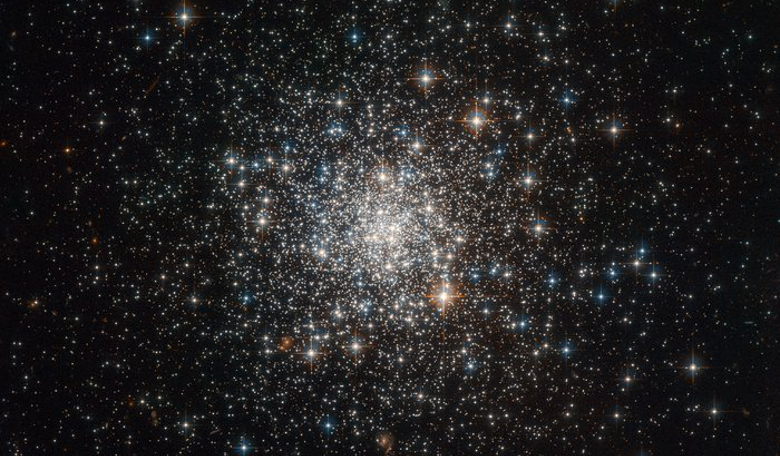Does size matter? It does if you are trying to weigh up how the galaxy you call home fits in with the rest of the evolving Universe. And it turns out that the Milky Way is neither big nor small; it is intermediate if not a bit chunkier compared to our galactic neighbours. With the help of Gaia, scientists have been able to come up with one of the most accurate measurements yet of our galaxy's mass and its a huge 1.5 trillion solar masses and most of which is dark matter.
If you have ever been to a school fete and seen a large, glass jar filled with sweets, labelled “guess how many jelly beans there are,” chances are you have studied it meticulously to try and work out that magic number. Imagine then what it must feel like for an astronomer to stand on a small rocky world in the midst of the Milky Way and try and work out how much it weighs.
It is no surprise then, that previous estimates of the Milky Way’s mass has ranged anywhere from 500 billion to 3 trillion times the mass of the Sun. What scientists do know about its contents is that there is a 4-million-solar-mass supermassive black hole anchored at the centre of the galaxy. But what about the rest? The large discrepancies between the mass estimates arose mainly from the different methods used for measuring the distribution of dark matter — the elusive material which makes up about 90 percent of the mass of the galaxy.
When you can’t measure accurately what you can’t see, a bit like those jelly beans, then you turn to alternative methods to seek an answer. This is exactly what an international team of astronomers have done and instead of looking for something that has escaped all detection so far, they measured the velocities of globular clusters to work out the mass of the Milky Way.
Globular clusters are isolated, densely packed, spherical collections of ancient stars, that orbit the centre of our galaxy. Globular clusters are very tightly bound by gravity, and the more massive a galaxy is, the faster its globular clusters move under the pull of this attracting force.
Scientists have previously been able to measure the speed at which a globular cluster approaches or recedes from Earth along our line of sight but this information alone is quite limiting. Then along came Gaia. While Hubble is good at measuring fainter stars that are further away, Gaia has been exclusively designed to create a precise three-dimensional map of astronomical objects throughout the Milky Way, while also tracking their motions.
By combining the measurements from 12 clusters out to 130,000 light-years taken by Hubble over a 10-year period, coupled with measurements for 34 globular clusters out to 65,000 light-years obtained via Gaia, the team where also able to measure the sideways motion of the clusters. This allowed them to calculate the total velocity, and consequently the galactic mass out to nearly one million light-years from Earth.
"We know from cosmological simulations what the distribution of mass in the galaxies should look like, so we can calculate how accurate this extrapolation is for the Milky Way," said Laura Watkins of the European Southern Observatory in Garching, Germany, lead author of the combined Hubble and Gaia study.
That extrapolated figure gives a mass for the Milky Way as a staggering 1.5 trillion solar masses (with one solar mass being the mass of our Sun). Amazingly, only a few percent of this is down to the approximately 200 billion stars in our galaxy; the rest we still can’t see, just infer.
"Because of their great distances, globular star clusters are some of the best tracers astronomers have to measure the mass of the vast envelope of dark matter surrounding our galaxy far beyond the spiral disk of stars," said Tony Sohn of STScI, who led the Hubble measurements.
"Not knowing the precise mass of the Milky Way presents a problem for a lot of cosmological questions,” added Roeland van der Marel of the Space Telescope Science Institute (STScI) in Baltimore, Maryland. Accurately determining the mass for the Milky Way will now help alleviate some of these conundrums and help astronomers work out where our galaxy fits in the grand-scale of the cosmos.











